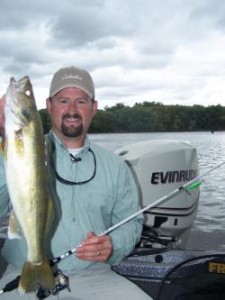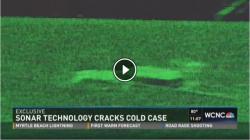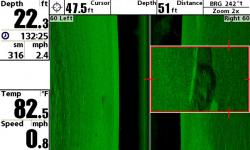Hot weather and catfish go together like fried fish and hushpuppies. And catfish are one of the best fish to fry with your hushpuppies, too. Summer is a great time to catch some hard fighting, tasty catfish and there are several excellent places to catch North Georgia catfish. From lakes and public ponds to rivers, catfish are plentiful and hungry.
Catfish are the ordinary citizen of the underwater world. You can find them in most waters, they aren’t picky about what they eat, tackle does not have to be fancy or expensive, and you can catch them from the bank as well as from a boat. They bite night and day and there are several kinds of cats you can catch in most places.
Tackle can be as simple as a cane pole or as fancy as a custom rod and expensive reel. But you can catch them on trotlines, jugs and limb lines, too. Bait ranges from live bream and minnows to stink bait that only a scavenger could love. You can go after frying size fish or try for a trophy weighing over 100 pounds.
There is nothing quite like setting out a trotline across a cove, baiting up a few limb lines and then sitting around a fire on the bank with a few rods in holders waiting on a bite. You can pretty much keep as many cats as you want to clean since some species have no creel limit and the ones that do have a limit have a very high number you can keep.
Georgia produces some big catfish. The state record flathead weighed 83 pounds, the record blue cat 80 pounds and the channel cat record is 45 pounds. You may break one of those records.
The following waters offer a variety of kinds of places to fish in north Georgia and the chance to catch several kinds of catfish.
Lake Thurmond
Also known as Clark’s Hill to most Georgia anglers, this big lake has flatheads, blue cats, channel cats and bullheads. Located on the Savannah River near Augusta, you can find good bank access in several areas and there are many boat ramps to launch and go to secluded coves to fish. The lake record cats show what you might have a chance of catching. The biggest flathead from Clarks Hill is a 64 pound fish caught in 2010. A 62 pound blue cat was landed several years ago and the lake has produced a 25 pound channel cat. There are bigger cats in the lake.
I grew up running hooks on Clark’s Hill for catfish back in the 1960s and 70s. We used live bluegill for bait and never caught a flathead since there were none in the lake back then. Fishermen introduced them to the lake and they have grown fast and you have a good chance of catching a 40 pound plus fish.
Live minnows and small panfish are the preferred bait for flatheads and the big ones usually stay deep. The Georgia Little River arm is a good place to catch them and concentrating on the old river and creek channels are your best bet. Fish a three inch bluegill on a stout rod and reel loaded with heavy line and you can hook one of the monsters that live there. If you want a really big flathead, use a bigger bluegill.
Blue and channel cats will also hit small live bream and minnows. A couple of summers ago Javin English and I put out 50 jug hooks with small bream for bait one night and landed 14 channel cats, all about six pounds each. We put them out in Germany Creek and checked them twice that night. One problem with jugs at Clark’s Hill now is the hydrilla. You have to keep moving them out in more open water or at least near the edge of the hydrilla.
Better baits for channel cats include earthworms, chicken liver, shrimp, cut bait and stinkbait. They have smaller mouths than the other species so smaller baits are best. Cut blueback herring, mullet or whole threadfin shad are excellent baits for channel cats and blues will hit those baits, too. Cut bait and stinkbait seem to work best for the blue cats at Clarks Hill.
There is good bank access at the Highway 43 Bridge. The river channel swings right in to the bank at the south end of the bridge, the corner on your left before you get to the bridge going toward Lincolnton. You can park there and join the group usually fishing there at night for big flatheads, blues and channel cats. There is also bank access at the other bridge further downstream on Little River and there are many ramps, like the one at Amity Park, where you can fish from the bank.
Put in at one of the many ramps in Little River and go up above the Highway 43 Bridge and fish the edge of the river channel for cats. A hot spot is where two channels come together, like the one just above the island upstream of the bridge. The Little River channel comes in from the right going upstream and the Hart Creek channel comes in from straight ahead. Anchor on the point between the two channels and you will catch cats.
Also find ditches and small creeks running into either Hart Creek or Little River and fish their junctions. The outside bends of the creek and river channels are also good. Put out several rods with different baits, sit back and let the cats tell you what they want that night.
All catfish from Clarks Hill are good to eat and there are no advisories on any species. Bigger blue and channel cats may be tough and better for stews, but big flatheads stay tender and delicious.
Etowah River
The Etowah River downstream of the Lake Allatoona Dam is an excellent river for catfish. There is some bank access at bridge crossings and boat ramps but your best bet is to launch a small boat and fish from it. There are channel, blue and flathead cats in this section of the river. You will catch a lot of three pound blue cats and one pound channel cats, but ten pound blues and five pound channel cats are fairly common.
River fishing is different from lakes but fish can be found in consistent places. Find a deeper hole where the river forms a pool and the biggest cats will be living there. Logjams or rocks make pools even better. The fish hold in the deeper water and will feed, but they also move to the more shallow water at each end of the pool to feed.
The best baits in the river for blues and channel cats are chicken liver, earthworms and stink baits. For bigger blues and flatheads try live or cut shad or live bream. The bigger fish tend to stay deeper so fish the deepest water in the pool with big live baits to entice them.
Anchor your boat at the head of the pool and let your bait drift down the slope into the deeper water, or cast into the deep water and fish on the bottom. Also try anchoring in the pool or tying to a shoreline limb and letting your bait drift to the end of the pool where the water gets shallower.
Two of the best areas to catch catfish here are just downstream of the Allatoona Dam and near Heritage Park in Rome. There are some good holes near the dam and at the park where the Etowah joins with the Oostanaula River to form the Coosa River.
There are no restrictions on eating catfish from the Etowah River and the average size blue and channel cat is good eating, any way you want to cook them. Flatheads are also good at any size cooked any way you like. There are restrictions of one meal per week on channel cats from the Coosa River because of PCB contamination, so if you fish near the junction of the two rivers near the head of the Coosa you should consider releasing most of the channel cats you catch there.
Lake Oconee
The numbers and size of catfish in Lake Oconee often surprise anglers, especially when bass fishermen have their plugs slammed by one. I have caught an 18 pound channel cat on a spinnerbait and a 35 pound flathead on a jig and pig in club tournaments there. If they will eat artificial baits you can catch a lot of big cats on baits they like better.
Located on the Oconee River near Eatonton, Lake Oconee offers both bank and boat fishing. You can fish from the bank at any of the boat ramps and bridge crossings on the lake and catch fish. Bridge crossings are especially good around the riprap at night if you suspend your bait a few inches above the rocks so you don’t get hung up on every cast.
You can catch blue, channel and flathead catfish as well as bullheads there. The lake has produced a 40 pound flathead, a 34 pound channel cat and a 15 pound blue cat, but much bigger blue cats are in the lake. Bullheads will average about a pound each but are very common. Often called mud cats or yellow cats, bullheads are good to eat but have very red, soft meat. There are also white catfish in the lake and they look a lot like channel cats.
Live shad or bluegill as well as cut bait work well for blues and flatheads. For channel cats earthworms and stink baits are good. Night fishing is best on this heavily used lake and the calmer water at night gives you peace and quiet and there is a more consistent bite than during the day.
There is a lot of standing timber on the lake and cats live in it, but it is hard to land a big one around it. The best bet is to anchor your boat on a point near the timber and fish on the bottom. Baiting up a hole to draw the fish out of the timber works. You can pour out a bag of rice, put a bag of fish guts on the bottom or throw out some sinking catfish food in advance of your trip then sweeten the hole the day before you go fishing to get them to come to you.
Rocky points always hold bullheads and catfish so concentrate on them. There are fish all over the lake but the Oconee River above the interstate bridge has some good holes and channel swings to fish. Anchor on the edge of the river channel where it makes a bend or where a feeder creek or ditch enters it and catfish will be there.
There are no advisories or restrictions on eating catfish of any size or species from Lake Oconee.
West Point Lake
West Point Lake on the Chattahoochee River near LaGrange is one of the best catfish lakes in middle Georgia. There are many two to three pound channel cats in it and they are a good eating size. There used to be a lot of commercial cat fishermen working the lake due to the numbers of fish there, and the fish are still there. Flatheads and blue cats are also in the lake.
A 33 pound flathead and a 20 pound blue cat have been recorded at West Point but there are much bigger fish in the lake. Access is good for fishing from the many parks and ramps on the bank and there is a boat ramp close to any part of the lake you want to fish. Yellowjacket Creek, Whitewater Creek and Wehadkee Creek are all good areas to try for channel cats. Your best bet for flatheads is the upper Chattahoochee River.
Fish at night around the bridges in Yellowjacket and Wehadkee Creeks but also try the Highway 109 bridge on the main lake. You can fish from the bank around those bridges or tie up under the bridges and fish beside the end pilings. Also try fishing just off the riprap from your boat.
For flatheads here and anywhere else live bream are the best bait. For blues and channel cats the usual baits like earthworms, stink baits, live or cut shad and cut mullet works very well. When getting a fish for cut bait, an oily fish like a mullet or shad is best since it will put more scent into the water to attract the fish.
The Georgia Environmental Protection Division has no restrictions on smaller channel cats from West Point but you should not eat more than one meal per week of fish 16 inches long or longer due to PCB contamination.
McDuffie Public Fishing Area
McDuffie PFA offers great fishing for channel cats and easy access for bank and boat fishing. There is handicapped fishing access and the seven ponds ranging from five to 37 acres are stocked with channel cats regularly and are fertilized. You will one of the following if you are ages 16 to 64: A 3-day hunting/fishing license, a Wildlife Management Area License, a 3-day hunting/fishing license, a Sportsman’s, Honorary or Lifetime License or a Georgia Outdoor Recreation Pass.
The McDuffie PFA is near Thomson and offers concrete boat ramps, restrooms, picnic tables and camping. Shorelines are clean and easy to fish from but you can fish only from sunrise to sunset Wednesday through Sunday. The limit on channel cats is five per day and you are limited to two lines in the water at a time.
Best baits are chicken liver, blood and stink baits and earthworms. You are not allowed to use live fish of any kind, including minnows, to fish here. Most channel cats are good eating size but you are not likely to catch a really big cat here. The best bet is to find a sandy bank, set up two lines in the water with one of the above baits on a small catfish hook and light lead and wait for a bite. Fishing is relaxed and simple.
You can launch a boat on any of the open ponds and get away from the more crowded bank access areas. Boats are restricted to electric or paddle power only. A gas motor may be attached to the boat but may not be cranked. Find a small drop off or channel with a depthfinder in the ponds and fish around it for the best chances of catching fish.
This is a great place to take kids fishing since facilities are convenient and fishing is good. Kids can play when they get tired of fishing, something important when teaching young kids to fish.
Any of these destinations would be a great choice this summer and you will catch catfish if you give them a try. Load up your tackle, head to one and bring home a mess of delicious fish for your next c



